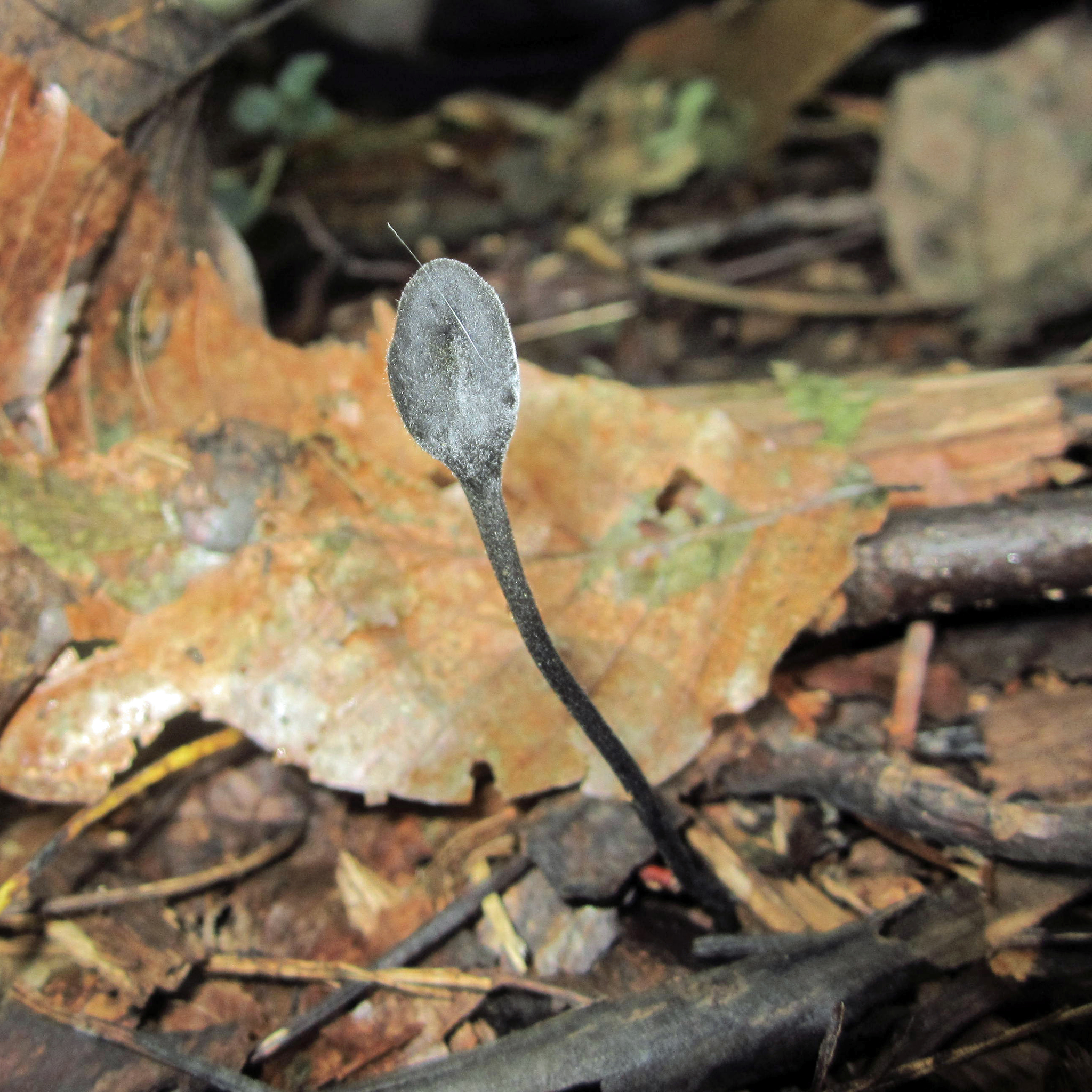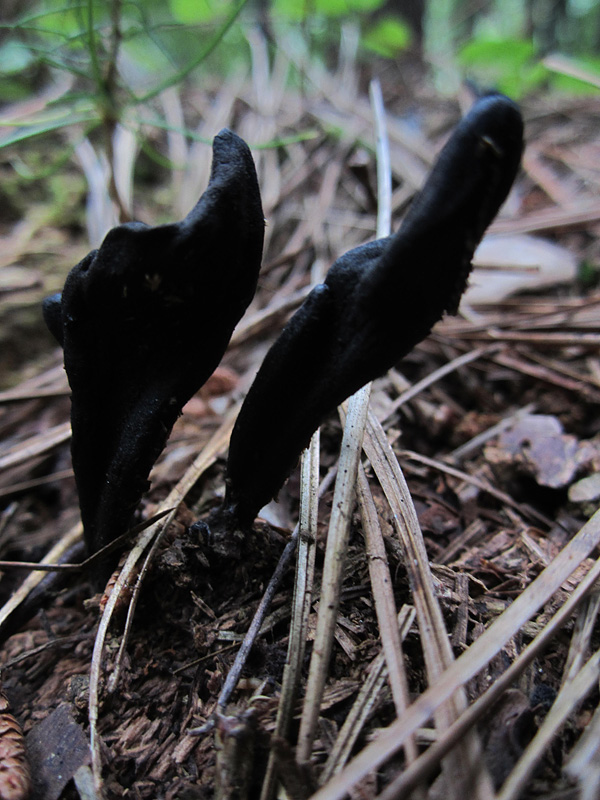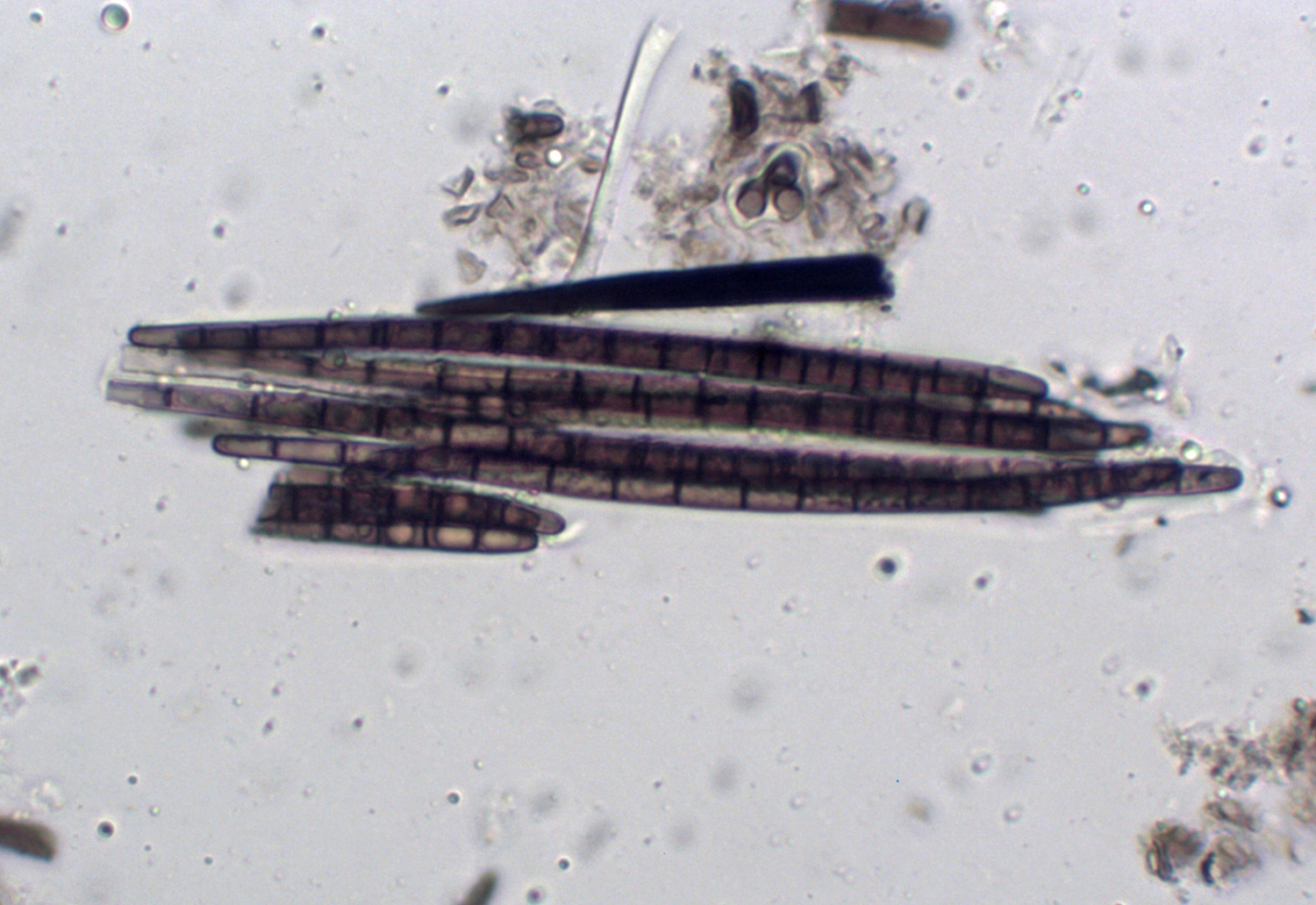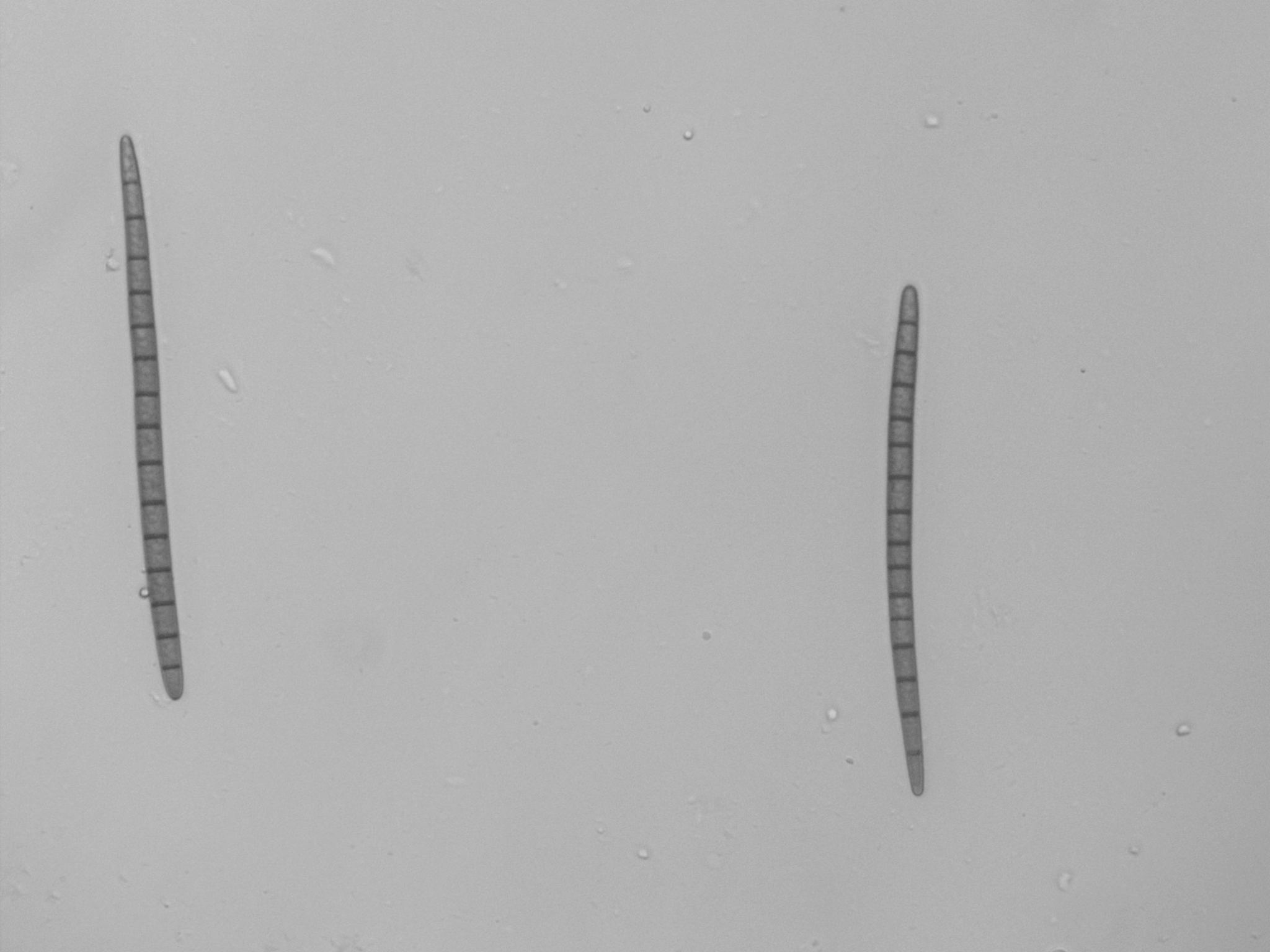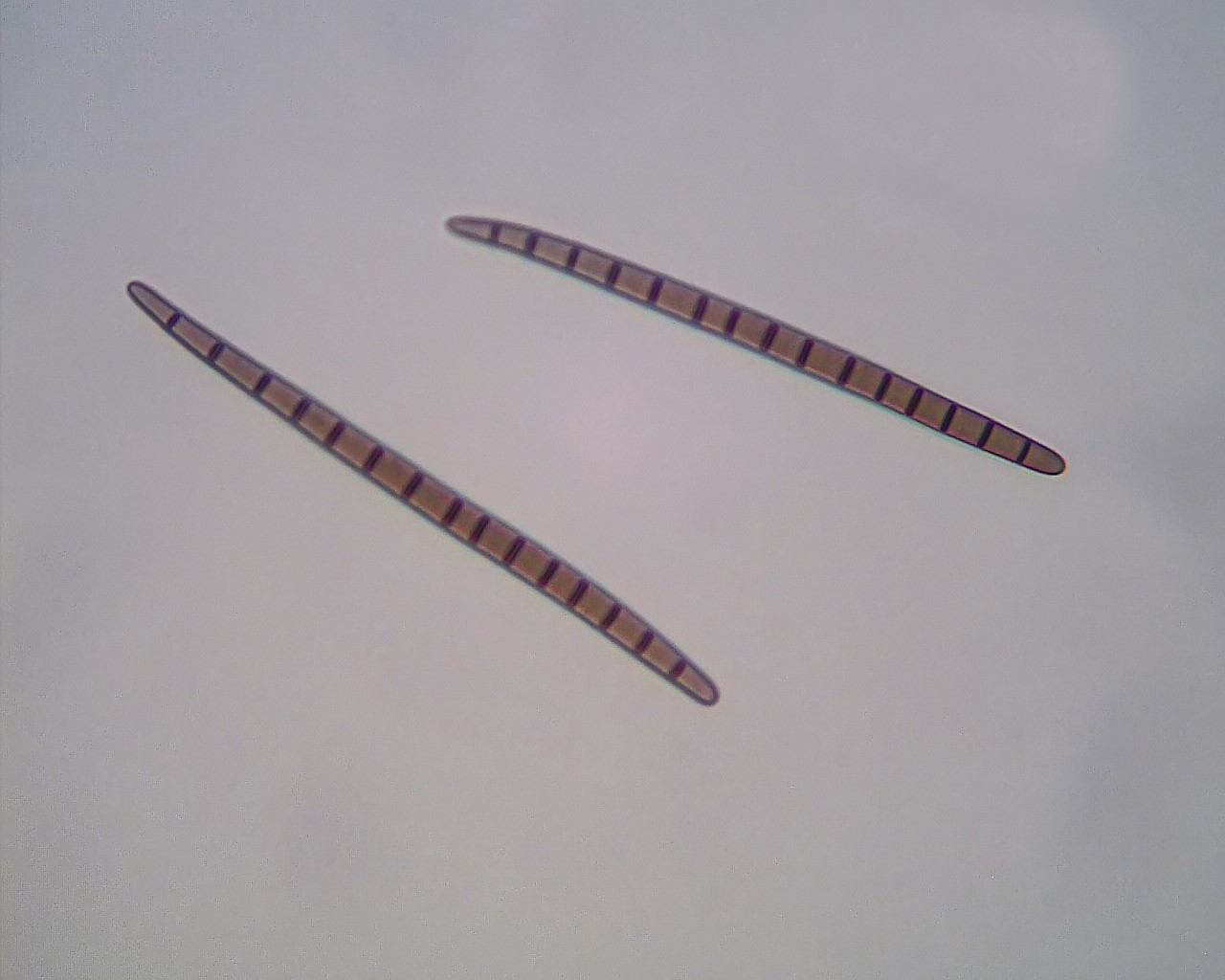Map Snapshot







22 Records
Status
Found scattered on rotting wood, soil, or moss.
Description
Fruiting body: Black, dry. Head; club to lance-shaped, somewhat compressed; white hairs visible under magnifying lens. Stalk: Hard. 15- septate spores differentiate this species from similar species. Spore examination is necessary to identify any black earth tongues to species. (J. Solem, pers. comm.)
See also Geoglossum. Use Trichoglossum sp. page if identification isn't verified by spore examination.
Seasonality Snapshot
Source: Wikipedia
| Trichoglossum hirsutum | |
|---|---|

| |
| Trichoglossum hirsutum, Germany | |
| Scientific classification | |
| Domain: | Eukaryota |
| Kingdom: | Fungi |
| Division: | Ascomycota |
| Class: | Geoglossomycetes |
| Order: | Geoglossales |
| Family: | Geoglossaceae |
| Genus: | Trichoglossum |
| Species: | T. hirsutum
|
| Binomial name | |
| Trichoglossum hirsutum | |
| Synonyms | |
| |
Trichoglossum hirsutum is a species of fungus in the family Geoglossaceae. In the UK, it has been given the recommended English name of hairy earthtongue.[1] In North America it is known variously as velvety black earth tongue,[2] velvety earth tongue, shaggy earth tongue, or black earth tongue. DNA evidence suggests the hairy earthtongue may be a species complex.
Taxonomy
[edit]The species was first described by mycologist Christian Hendrik Persoon in 1794 as Geoglossum hirsutum. In 1907 Jean Louis Émile Boudier transferred the species to his new genus Trichoglossum, of which it is the type. Initial molecular research, based on cladistic analysis of DNA sequences, indicates that Trichoglossum hirsutum sensu lato comprises at least three separate taxa in Europe and North America, though these may not be morphologically distinguishable. At least one of these cryptic species occurs in both continents.[3]
Description
[edit]Ascocarps are club-shaped, up to 9 centimetres (3+1⁄2 in) tall, black to dark brown, with a swollen, spore-bearing head, up to a quarter or half the ascocarp height, and a finely hirsute, cylindrical stipe (stem) up to 5 millimetres (1⁄4 in) wide.[4] Microscopically, dark, thick-walled, acute setae are present. The asci are 8-spored, the ascospores 110–160 × 5–7 μm, becoming 15-septate at maturity.[3]
The epithet hirsutum (Latin: 'hairy') refers to the fine hairs (setae) that cover the ascocarp.[5]
Similar species
[edit]Many Trichoglossum species appear similar in the field and can only be identified by microscopic examination.[4] Superficially similar species of Geoglossum lack setae and are not finely hirsute under a hand lens.[4] Thuemenidium atropurpureum is usually more robust and can be slightly purplish.[4] Microglossum species have non-black hues.[4] Tolypocladium ophioglossoides can appear similar in age.[4]
Conservation
[edit]In Europe the short-spored earthtongue is typical of waxcap grasslands, a declining habitat due to changing agricultural practices.
Gallery
[edit]| Trichoglossum hirsutum | |
|---|---|
| Smooth hymenium | |
| No distinct cap | |
| Hymenium attachment is irregular or not applicable | |
| Stipe is bare | |
| Ecology is saprotrophic | |
-
Trichoglossum hirsutum stipe
-
Trichoglossum hirsutum
-
Trichoglossum hirsutum spores 400x phase contrast
-
Trichoglossum hirsutum spores 400x brightfield
References
[edit]- ^ Holden L. (April 2022). "English names for fungi 2022". British Mycological Society. Retrieved 2022-12-06.
- ^ Arora, David (1979). Mushrooms demystified: a comprehensive guide to the fleshy fungi of the central California coast. Berkeley, Calif: Ten Speed Press. ISBN 978-0-89815-010-0.
- ^ a b Hustad VP (2015). A circumscription of the earth tongue fungi: class Geoglossomycetes (Thesis). University of Illinois at Urbana-Champaign. Retrieved 2022-12-06.
- ^ a b c d e f Audubon (2023). Mushrooms of North America. Knopf. p. 51. ISBN 978-0-593-31998-7.
- ^ Trudell, Steve; Ammirati, Joe (2009). Mushrooms of the Pacific Northwest. Timber Press Field Guides. Portland, OR: Timber Press. pp. 242–243. ISBN 978-0-88192-935-5.
External links
[edit]- Trichoglossum hirsutum in Index Fungorum
- Trichoglossum hirsutum at mushroomobserver.org
- Trichoglossum hirsutum at California Fungi
- Key to Club Fungi in the Pacific Northwest

